|
|
|
|
Products mentioned in this Article
--None--
|
|
|
|
|
|
|
|
|
 |
|
|
 |
15th Scottish Division
By Gary Martin
Formation and the Great War
The 15th Scottish Division first found life in September 1914 as part of the K2 Army Group and consisted of a wide variety of Scots. The civilian soldiers were enthusiastic and faced stiff training although they did have some problems adapting to military life. |
|
They were ready in July 1915 and saw action through out the Great War, most notably the Battle of Loos where this young division was awarded 4 Victoria Crosses but suffered 6,435 casualties in 2 days of fighting. The division was disbanded in July 1919.
Reforming and training - “Banished to Northumberland”.
In April 1939 it was decided that the territorial army in the UK should be doubled so the 15th was formed as a duplicate of the 52nd (Lowland) Division. Most of the arms and equipment available at the time were being sent to front line units and the Scots suffered from poor resources during their initial training.
The fear of invasion was high after the evacuation of the BEF from Dunkirk, so the division was transferred to the south, where they stood ready to defend the coast. Over the next few years the division would go through various changes of fortune. Their supply problems would be solved, only for them to be lost again when units were needed for North Africa.
|
|
For 6 months they became a mixed division, containing armour and infantry but were reformed back to infantry only. During this time they trained in Northumberland where they took part in various exercises and had extensive training in preparation for the impending invasion of Europe.
The first battle – Operation Epsom
On the 24th Of June they returned to French soil under the command of Major-General MacMillan, who would lead them in some of the most bitter fighting of Normandy campaign.
Two days after landing the Division saw its first action as VIII corps launched Operation Epsom, the drive south to the Oden and Orne rivers.
|
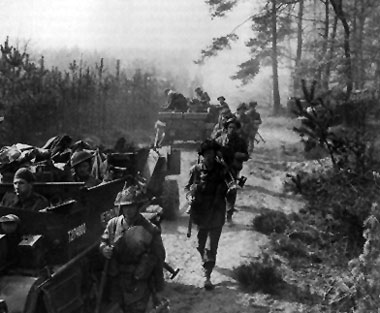 |
|
The attack was launched on the 28th with heavy artillery support and the Scots would lead the way with the 43rd Wessex Division supporting and the 11th Armoured Division followed ready to exploit the river crossings once they were secure.
The German forces had not been idle either. Taking advantage of the poor weather they were able to move re-enforcements to the front and were preparing to launch their own counter attack, unfortunately they were just too late and the allied forces struck first.
|
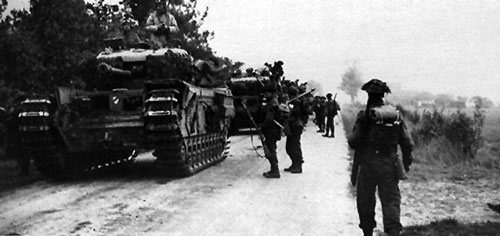 |
With support from the Churchills of the 31st Tank Brigade, they moved off in good order across the corn fields to what seemed to be a poorly defended front line. Panzergrenadiers emerged from underground bunkers which were not touched by the preparatory bombardment and engaged them at close range. |
|
The rest of the day was spent pushing through several fortified villages which had to be literally reduced to rubble before they could be taken. At the end of their first day of battle they had lost almost 200 men but faced and stopped counter-attacks from proven German divisions such as the 21st Panzer and 12th SS-Panzer divisions.
With the 43rd Wessex Division securing the villages the Scots set off next morning only to face more determined resistance. By the afternoon the 227th Infantry Brigade had reached the Oden and forced a crossing for the armour and infantry who then advanced to the northern slopes of Hill 112.
|
|
The next 2 days were spent trying to expand the Scottish salient and looking for further places to cross the Oden. Lieutenant General O’Connor halted any further moves south until the current position was expanded and secure. Supported with tanks the Scots spent the next 2 days clearing the roads to the west.
By early evening of they were on the defensive as 9th SS-Panzer Division launched a counter attack against the 44th Lowland Brigade, which was eventually driven off with support from the 4th Armoured Brigade and 91st Anti-tank regiment.
The next attack went in against the 46th Highland Brigade who gave some ground to the panzers but they regained it when the reserves and heavy Churchill tanks of the 31st Tank Brigade and 7th RTR were committed to the battle. South of the Oden another counter attack had hit the 2nd Argylls and greatly reduced the bridgehead but in the end the Scots held on and the Germans withdrew.
Up until the 2nd Of July the 15th set about securing the right hand side of the Scottish corridor in preparation for the expected counter-attack. This never came and they were relived by the 53rd Welsh Division and withdrawn from the front line. In 5 days of fighting they had advanced over 5 miles into the enemy lines and then held this ground against units from veteran panzer divisions including the elite 12th SS. Quite a considerable feat for a fresh division in which most of the men hadn’t been in battle before.
|
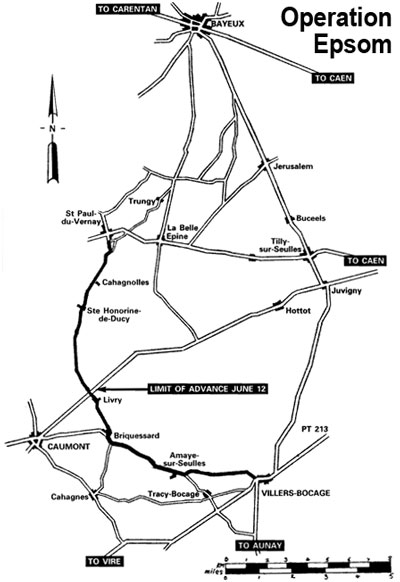 |
|
Onward – 3 rivers and a club route
For the rest of July they continued to see action in Normandy and expanded the Scottish Corridor before leading the attack out of it. By August they were on the heels of the axis forces as they retreated to the Seine which was crossed on the 28th. In September they were to take their part in Operation Market Garden as part of the formation advancing up the left side of the club route. Fighting there was intense and when the airborne operation failed the allies formed a more defensive line.
1945 opened with the breaching the Siegfried line and the advance into Germany where their River crossing training was put to good use. The division was to provide the lead elements for both the Rhine and Elbe river crossings and were in fact the only British division to take part in all 3 of the major river crossings of the war.
|
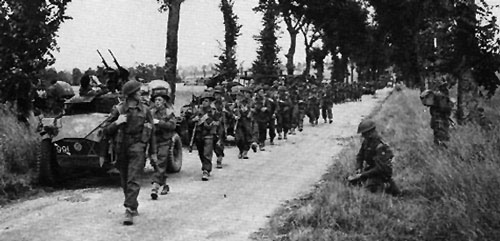 |
On the coast of the Baltic the war ended for the 15th Scottish Division. They had suffered 11,772 casualties and over 1,300 men had received honours and awards. They were moved to Germany as part of the occupation forces before being disbanded in April 1946.
51st Highland Division....
|
|
Fielding the 15th Scottish Division in Flames of War
You can field a 15th Scottish Division Rifle Company using a Rifle Company from D-Day: British and the Tank Escorts Command Card from the D-Day: British Command Cards pack.
15th Scottish Division in Normandy
• 44th Infantry Brigade
8th Bn. Royal Scots
6th Bn. Royal Scots Fusiliers
6th Bn. Kings Own Scottish Borderers
• 46th Infantry Brigade
9th Bn. Cameronians
2nd Bn. Glasgow Highlanders
7th Bn. Seaforth Highlanders
|
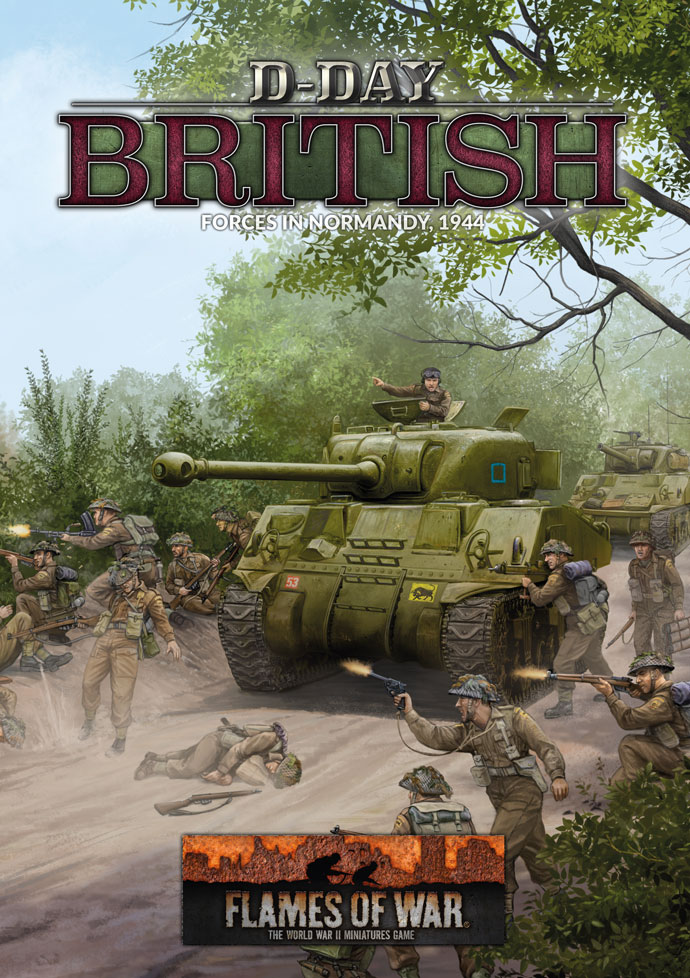 |
|
• 227th Infantry Brigade
10th Bn. Highland Light Infantry
2nd Bn. Gordon Highlanders
2nd Bn. Argyle and Sutherland Highlanders
• Machine Gunners
1st Bn. Middlesex Regiment
|
Last Updated On Monday, April 20, 2020 by Wayne at Battlefront
|
|
|